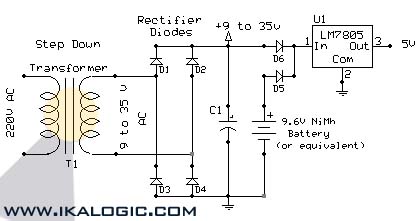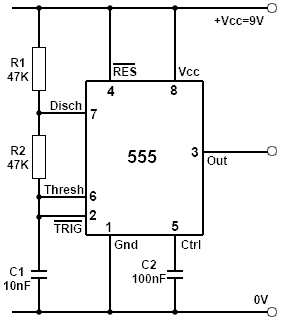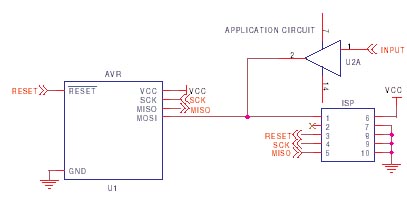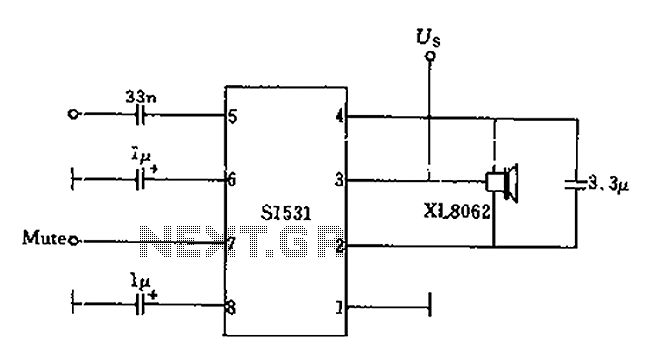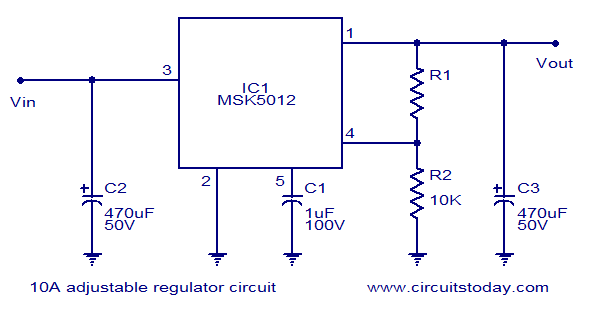
555 based Voltage inverter Schematic
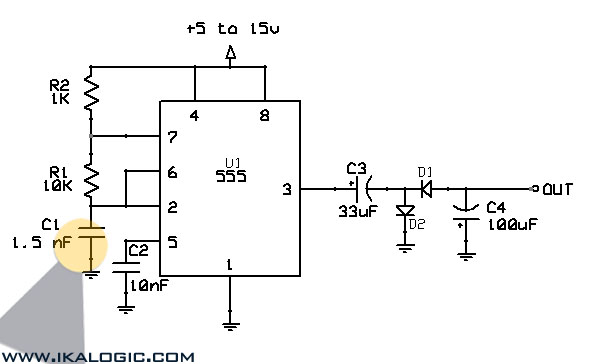
This circuit converts a positive voltage to a negative voltage, resulting in a loss of approximately 1.5 V. For instance, supplying 9 V to the circuit yields an output of -7.5 V. Additionally, this circuit can function as a voltage doubler by utilizing the output as the new ground for another circuit.
The described circuit is a voltage inverter that employs a charge pump topology. It typically consists of capacitors, diodes, and a switching element, such as a transistor or an integrated circuit (IC), to achieve the voltage conversion. The operation principle relies on the charging and discharging of capacitors to create a negative output voltage relative to the ground.
In a standard configuration, the circuit begins with a positive input voltage applied across a capacitor. During the charging phase, the capacitor stores energy. When the switch toggles, the stored energy is transferred through a diode to another capacitor, which is connected to the output. This process effectively inverts the voltage, resulting in a negative output while accounting for the voltage drop across the components.
To utilize the circuit as a voltage doubler, the output can be connected to the ground reference of a subsequent circuit. This configuration allows for the effective doubling of the input voltage, providing a higher voltage output for applications requiring increased power levels.
The design must consider factors such as the frequency of operation, component ratings, and load requirements to ensure efficiency and stability. Additionally, filtering capacitors may be employed at the output to smooth the voltage ripple, enhancing the performance of the circuit in sensitive applications. Proper layout and grounding techniques are essential to minimize noise and ensure reliable operation in various electronic environments.This circuit will convert a positive voltage to a negative voltage, while losing 1. 5 V (approximately). For example, if you`re supplying 9V to the circuit, the output will be -7. 5 V. This circuit can also be used as voltage doubler, by using the output as the new ground for another circuit. 🔗 External reference
The described circuit is a voltage inverter that employs a charge pump topology. It typically consists of capacitors, diodes, and a switching element, such as a transistor or an integrated circuit (IC), to achieve the voltage conversion. The operation principle relies on the charging and discharging of capacitors to create a negative output voltage relative to the ground.
In a standard configuration, the circuit begins with a positive input voltage applied across a capacitor. During the charging phase, the capacitor stores energy. When the switch toggles, the stored energy is transferred through a diode to another capacitor, which is connected to the output. This process effectively inverts the voltage, resulting in a negative output while accounting for the voltage drop across the components.
To utilize the circuit as a voltage doubler, the output can be connected to the ground reference of a subsequent circuit. This configuration allows for the effective doubling of the input voltage, providing a higher voltage output for applications requiring increased power levels.
The design must consider factors such as the frequency of operation, component ratings, and load requirements to ensure efficiency and stability. Additionally, filtering capacitors may be employed at the output to smooth the voltage ripple, enhancing the performance of the circuit in sensitive applications. Proper layout and grounding techniques are essential to minimize noise and ensure reliable operation in various electronic environments.This circuit will convert a positive voltage to a negative voltage, while losing 1. 5 V (approximately). For example, if you`re supplying 9V to the circuit, the output will be -7. 5 V. This circuit can also be used as voltage doubler, by using the output as the new ground for another circuit. 🔗 External reference
